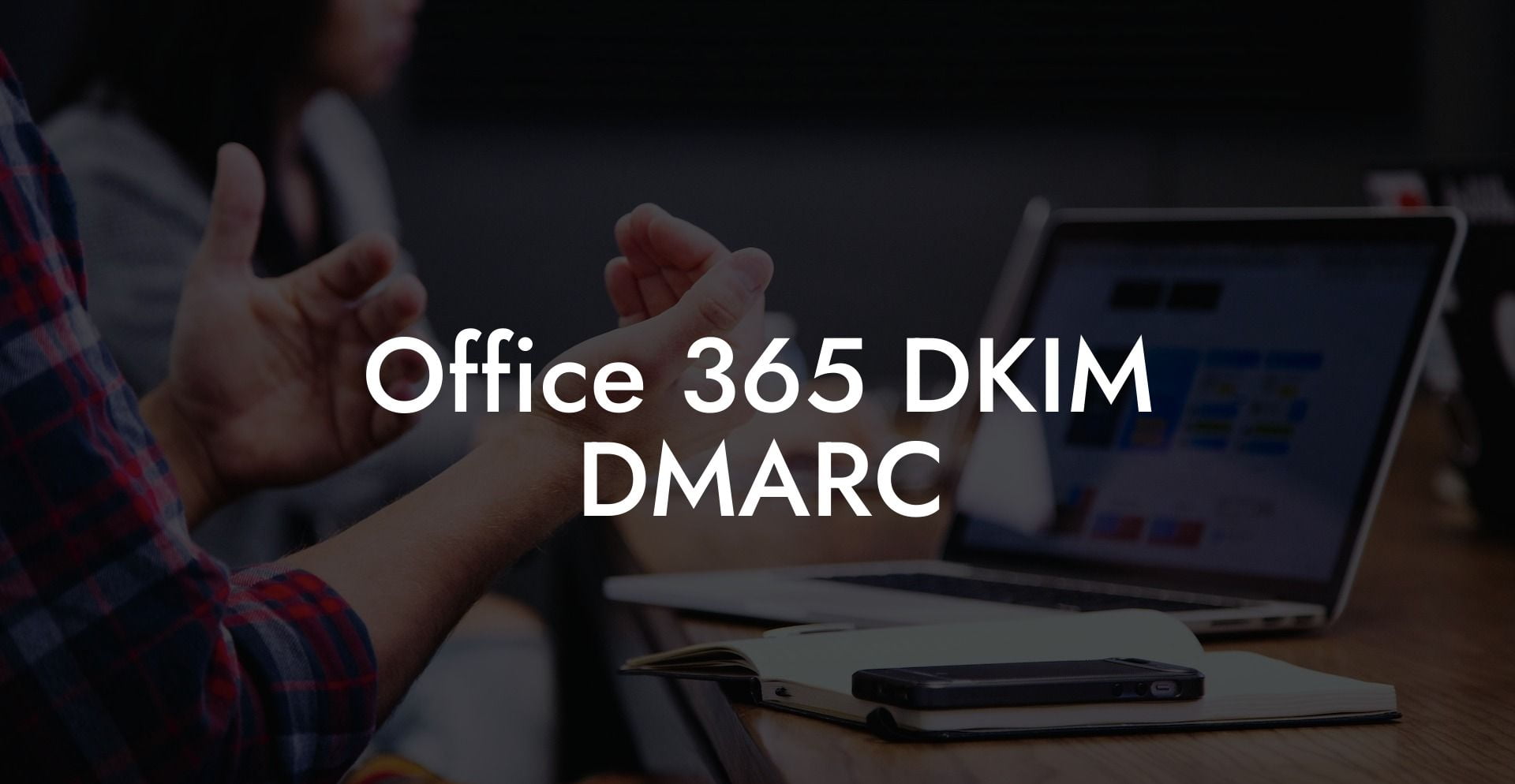Are you worried about spoofing and phishing attacks targeting your Office 365 email system? In this guide, we will provide a comprehensive overview of two critical authentication methods - DKIM (DomainKeys Identified Mail) and DMARC (Domain-based Message Authentication, Reporting & Conformance) in Office 365. Learn how to safeguard your organization's email system and protect your users from cyber threats with these essential email security measures.
Office 365 DKIM DMARC Table of Contents
What are DKIM and DMARC?
DKIM – DomainKeys Identified Mail
DKIM is an email authentication method that makes it easier for organizations to detect email forgery, protect their domain's reputation and increase email deliverability. This is achieved by adding a digital signature to the email header, which validates the authenticity of both the sender and the message content.
DMARC – Domain-based Message Authentication, Reporting & Conformance
Protect Your Data Today With a Secure Password Manager. Our Top Password Managers:
DMARC is an email authentication protocol that lays out policies for both DKIM and SPF (Sender Policy Framework) usage. It verifies the sender's legitimacy by looking for a match between the sender's domain and the authenticated domain in the email header. DMARC also allows organizations to determine what happens if an email fails authentication checks - accept, quarantine, or reject the message.
Why should you implement DKIM and DMARC in Office 365?
- Enhanced Security: Deploying DKIM and DMARC in Office 365 helps protect your organization from spoofing and phishing attacks, as these protocols make it more difficult for attackers to impersonate your domain.
- Improved Deliverability: By authenticating your emails with DKIM and DMARC, you increase your organization's domain reputation, which in turn improves email deliverability and reduces the chance of your emails being flagged as spam.
- Compliance Requirements: Many industries require organizations to follow strict email security practices, which often include implementing DKIM and DMARC. Ensuring your email system is compliant could save you from potential legal troubles or penalties.
- Better Visibility: DMARC reports provide valuable insights into your email system, including authentication failures and potential threats. These reports can help you fine-tune your email security measures and stay ahead of evolving cyber threats.
How to set up DKIM and DMARC in Office 365
Setting up DKIM
- Log in to the Office 365 Admin Center.
- Navigate to Exchange Admin Center > Protection > dkim.
- Select the domain you want to configure DKIM for and click "Enable." This will automatically create two CNAME records for your domain.
- Add these CNAME records to your domain's DNS by contacting your domain registrar or following their documentation.
- Verify the DKIM setup by sending an email to a test recipient and checking the email headers for a "DKIM-Signature" field.
Setting up DMARC
- Create a DMARC policy that specifies the desired actions for emails that fail authentication (none, quarantine, or reject).
- Include the email addresses to which DMARC reports should be sent.
- Add a DMARC TXT record to your domain's DNS with the policy and report email addresses.
- Monitor DMARC reports for any issues or threats, and adjust your authentication policies as needed.
Office 365 DKIM DMARC Example:
Imagine your organization receives a spoofed email that appears to be from one of your company's higher-ups, requesting sensitive information. If your Office 365 email system employs DKIM and DMARC, the email would likely be flagged as unauthenticated, and depending on your DMARC policy, it could be quarantined or rejected entirely. In this way, Office 365 DKIM and DMARC help protect your organization from falling victim to costly phishing and spoofing attacks.
Now that you have a better understanding of Office 365 DKIM and DMARC, implementing these authentication protocols is crucial to your organization's email security. Don't let your domain reputation suffer or your employees fall victim to phishing attacks - act now to secure your organization's email system. If you found this information helpful, please share this post with your network and explore other cybersecurity guides on Voice Phishing.
Protect Your Data Today With a Secure Password Manager. Our Top Password Managers:















